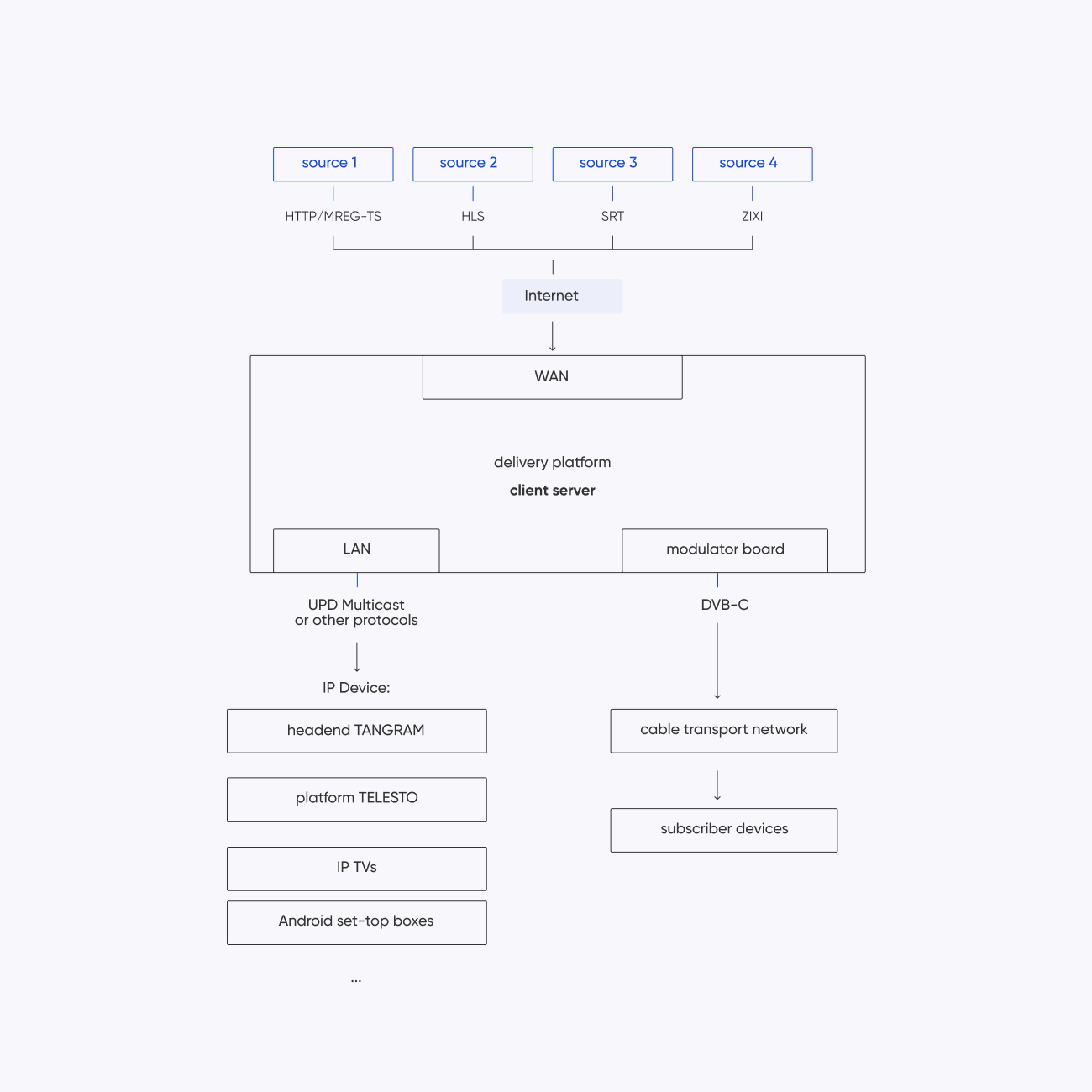Solutions
Technologies
The Broadcast TV Streams to Local Network service greatly enhanced the guest experience at Oceanfront Resort. Easy access to a wide range of TV channels on personal devices increased guest satisfaction. Outstanding technical support made the setup process smooth. Highly recommend.
Elin Andersson
Operations Manager
Broadcast TV Streams to Local Network at Mountain View Lodge significantly enhanced TV content delivery. Flexible customization options and excellent technical support ensured seamless integration. Guests appreciated the improvement, enhancing our amenities.
Mikkel Nielsen
Technical Director
Downloads
Broadcast TV Streams to the Local Network
This documentation section outlines the technical specifications, components, and procedures involved in implementing this service.

Components
- TV Sources: Television channels obtained from cable providers, satellite broadcasts, or internal production sources.
- Encoders: Devices responsible for capturing and encoding TV signals into digital formats suitable for network transmission.
- Network Infrastructure: Local network components including switches, routers, and cabling required to facilitate the distribution of TV streams.
- Decoders: Devices that receive and decode the encoded TV streams, allowing playback on compatible display devices.
- Middleware: Software or hardware solutions used for managing channel lineup, scheduling, and access control within the local network.
Implementation Process
- Source Capture and Encoding: TV signals are captured from the source and encoded using dedicated hardware or software encoders capable of converting analog or digital TV signals into IP-based streams.
- Network Configuration: Configure the local network infrastructure to support multicast or unicast transmission of TV streams, ensuring adequate bandwidth and network reliability.
- Decoding and Playback: Install and configure decoders at desired locations within the local network to receive and decode the transmitted TV streams. Connect decoders to display devices such as TVs or monitors for playback.
- Middleware Integration: Integrate middleware solutions to manage channel lineup, schedule programming, and enforce access controls based on user permissions within the local network.
- Testing and Optimization: Conduct thorough testing of the entire setup to ensure proper transmission, decoding, and playback of TV streams. Optimize network settings and configurations as needed to achieve optimal performance.
Technical Specifications
- Transmission Protocols: Utilize multicast or unicast transmission protocols such as UDP or RTP for delivering TV streams over the local network.
- Video Codecs: Support commonly used video codecs such as H.264 or H.265 for efficient compression and transmission of video content.
- Network Bandwidth: Ensure sufficient network bandwidth to accommodate the simultaneous transmission of multiple TV streams without degradation in quality.
- Resolution and Bitrate: Configure encoding parameters to optimize resolution and bitrate based on display capabilities and network conditions.
How to Start
Assess your hotel's infrastructure and requirements
Determine whether you already have a cable infrastructure in place or if you need to set up a new system. Consider factors such as the number of rooms, the desired channel lineup, and any additional features like video-on-demand or interactive services. This assessment will help you determine the scope of the project and the necessary equipment and resources.
Learn MoreChoose a reliable TV signal provider and system
Consult with the provider to discuss your specific requirements and ensure that their system can meet your needs. Consider factors like the number and variety of channels available, the user interface for guests, content management features, and technical support.
Learn More